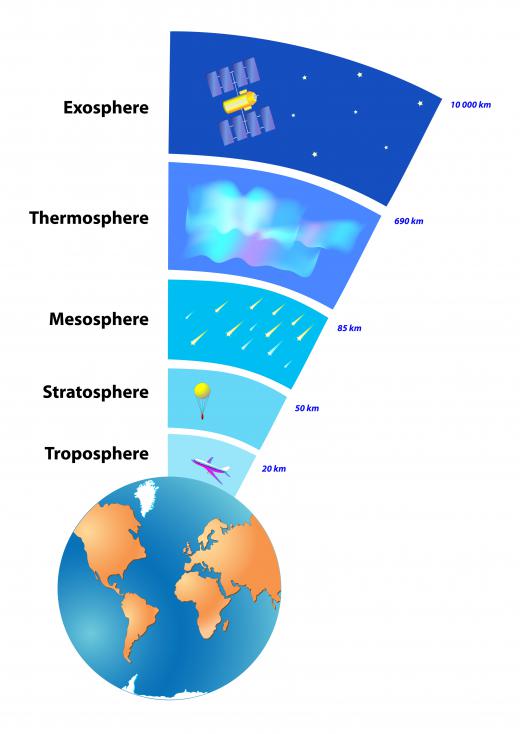What is the Stratosphere?
 Michael Anissimov
Michael Anissimov
The stratosphere is a region of the Earth’s atmosphere, above the troposphere and below the mesosphere. Unlike the troposphere below it, which gets cooler as altitude increases, temperatures in the stratosphere increase as altitude does, because the top of the stratosphere is heated by direct absorption of ultraviolet radiation by our Sun.
The point at which the stratosphere begins, the tropopause, is measured by where this temperature inversion starts taking place. The height of the stratosphere varies depending on what latitude we are talking about: at moderate latitudes, the stratosphere begins about 10 km (6 mi) above the surface and ends at 50 km (31 mi), at the poles, it starts at only 8 km (5 mi) altitude. This is because the ground at the poles is so cold, it doesn’t take much to produce greater temperatures, and thus the stratosphere begins earlier.

The word “stratosphere” or “stratospheric” is often used as a euphemism for “really high up.” In comparison to all the divisions for the Earth’s atmosphere – troposphere, stratosphere, mesosphere, thermosphere, and exosphere, by ascending altitude – the stratosphere is not really all that high up, but from our perspective here on the ground, it is about as high up as any typical person goes. The cruising altitude of commercial airliners is at about 10 km (6 mi), which puts them above harsh weather. Unlike the lower tropopause, where turbulence-causing convection dominates, the stratosphere is in thermal equilibrium, like a layer cake, as thus horizontal diffusion is much faster than vertical diffusion. The lack of vertical diffusion therefore eliminates the cause of turbulence. Occasionally, upwelling from the tropopause produces turbulence in the lower reaches of the stratosphere, where planes fly, which is responsible for any turbulence during the cruise phase of flight.

The lower stratosphere is the maximum possible altitude that a glider can fly at, because gliders rely upon thermal plumes which rise up from the ground and terminate at the base of the stratosphere. However, these limits can be broken by exploiting ridge lift, an atmospheric thermal phenomenon which occurs only around the edges of mountain ranges.
The first artificial object to reach the stratosphere was a shell fired by the Paris Gun, a 20 meter (67 feet) supergun built by the Germans during World War I. Its purpose was to fire on Paris from within German borders. This gun could fire a 120 kg shell with 7 kg (15 lb) of explosive to a range of 131 km (81 mi) and an altitude of 40 km (25 mi). Today, military fighter jets and bombers regularly cruise the low-to-mid stratosphere.
AS FEATURED ON:
AS FEATURED ON:












Discussion Comments
@JessicaLynn - I've never heard stratosphere used to describe something as really high up, but I'll take your word for it.
My only personal experience with the stratosphere has been flying on a plane. My favorite is when you're flying a little bit above the clouds and can look down at them. It looks so pretty, and it really is crazy to think about being that high up.
Stratosphere is definitely used as a euphemism for really high up! In fact, I stayed at a hotel in Las Vegas called "The Stratosphere" once. I know it wasn't actually in the stratosphere, but it was certainly very high up.
I believe the hotel goes 100 plus floor up. At the very top, there is a restaurant that is surrounded on all sides by windows. When I rode the hotel up, my ears popped! But the view was completely amazing. We were able to see all of Las Vegas, and the mountains near by.
The hotel also features some rides at the top. You couldn't have paid me enough to do that though!
Post your comments